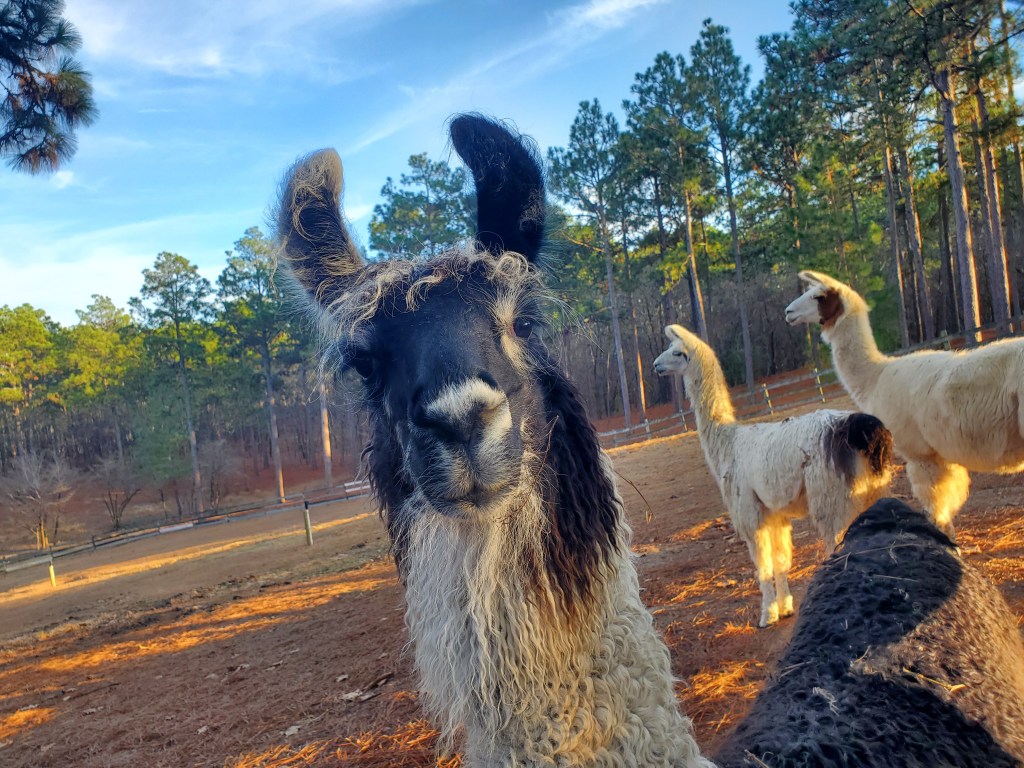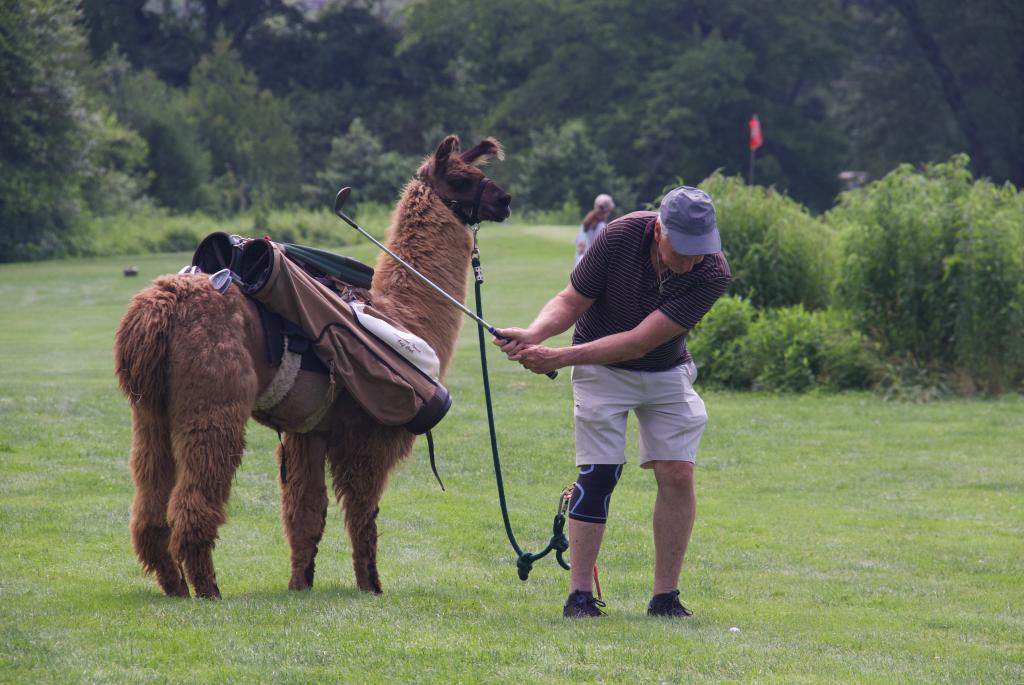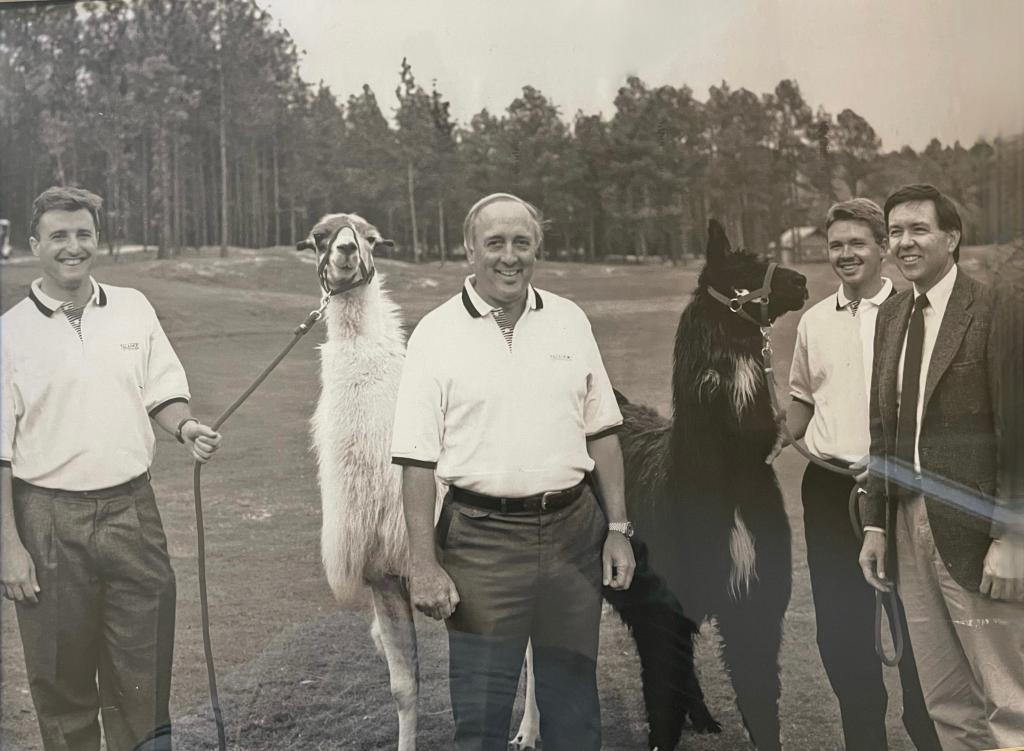Patient and ‘amazingly trainable,’ these gentle four-legged pack animals make the perfect golf caddies
North Carolina has many sights worth seeing; the gentle curves of the Blue Ridge Parkway, starry nights on the beaches of Cape Hatteras and expansive, picturesque golf courses.
If you’re really lucky, you can even shoot a round of golf with your very own llama caddy.
Llamas are having something of a cultural moment, akin to the rise of goat yoga in the late 2010s.
From hiring them out as whimsical Zoom meeting companions during the darkest days of the pandemic to easing the nerves of anxious travelers at airports, people are catching on that the robustly necked pack animals are actually big ole sweetie pies.
Llamas have been bred for centuries to carry goods and heavy building materials in the Andes Mountains, so lugging a couple of golf bags is no problem for the accommodating beasts of burden, which makes them natural caddies.
Talamore Golf Resort in Southern Pines was a pioneer in the llama caddy world, its owner introducing them in the early 1990s to generate publicity and as a market differentiator for the newly opened Rees Jones-designed course.
The addition of the unusual course companions proved to be a PR coup, spreading like wildfire across newspapers worldwide and putting the golf course on the map in a big way.
For nearly 15 years the wooly creatures dutifully lugged golf bags around the links for patrons, often creating a spectacle as golfers would stop what they were doing to take pictures with the famous camelids.
It was this slowing of the pace of play that led Talamore to wind down its llama caddy program in 2005, but to this day four resident llamas are still living large between the 13th green and 14th hole, and still know how to draw a crowd.
About 250 miles west of Talamore is Sherwood Forest Golf Club in Brevard, another Tar Heel State golf course renowned for its llama caddies.
The program started up in 2008 when Mark English, a golfer and owner of a nearby llama farm, pitched club pro Brian Lautenschlager on the idea of enlisting the animals as official caddies, Our State Magazine wrote at the time.
Lautenschlager, who had only recently arrived at the struggling 18-hole, 3-par golf course, said what the heck, and the rest was history.
Before long business was booming. The course was swamped with local TV reporters and cars were routinely pulling over on Route 276 to take a selfie with Sherwood Forest’s newest four-legged employees.
English spared no expense when setting up the llama caddy program, even commissioning specially designed “cross-tree” saddles made to carry two custom golf bags, Axios reported.
Golfers are each assigned their own llama which they then lead around as they play through the course. A minder accompanies each foursome, and the animals are only suited up for work if the weather isn’t excessively hot.
English told the outlet llamas are “amazingly trainable” and hypoallergenic, which is perfect for avoiding watery eyes on the back nine.
Their soft toes also don’t damage the fairway grass like motorized golf cart tires can, and they wait patiently and silently as golfers line up their shots, remaining in place via a stake in the ground attached to a rope line.
Golfers out on the course told the outlet that the llamas’ presence helps reduce the tension of play, and that the slow pace of the game makes for a relaxing experience.
“When I hit a bad shot, I just come pet the llama and don’t care,” Sonya Rhiver of Raleigh told the outlet.
These days booking a llama caddy for a round of golf is harder to come by, but its delightfully strange legacy lives on through photos and memories.

















